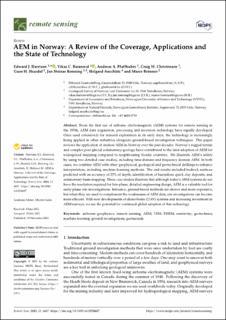| dc.description.abstract | From the first use of airborne electromagnetic (AEM) systems for remote sensing in the 1950s, AEM data acquisition, processing and inversion technology have rapidly developed. Once used extensively for mineral exploration in its early days, the technology is increasingly being applied in other industries alongside ground-based investigation techniques. This paper reviews the application of onshore AEM in Norway over the past decades. Norway’s rugged terrain and complex post-glacial sedimentary geology have contributed to the later adoption of AEM for widespread mapping compared to neighbouring Nordic countries. We illustrate AEM’s utility by using two detailed case studies, including time-domain and frequency domain AEM. In both cases, we combine AEM with other geophysical, geological and geotechnical drillings to enhance interpretation, including machine learning methods. The end results included bedrock surfaces predicted with an accuracy of 25% of depth, identification of hazardous quick clay deposits, and sedimentary basin mapping. These case studies illustrate that although today’s AEM systems do not have the resolution required for late-phase, detailed engineering design, AEM is a valuable tool for early-phase site investigations. Intrusive, ground-based methods are slower and more expensive, but when they are used to complement the weaknesses of AEM data, site investigations can become more efficient. With new developments of drone-borne (UAV) systems and increasing investment in AEM surveys, we see the potential for continued global adoption of this technology. | en_US |

